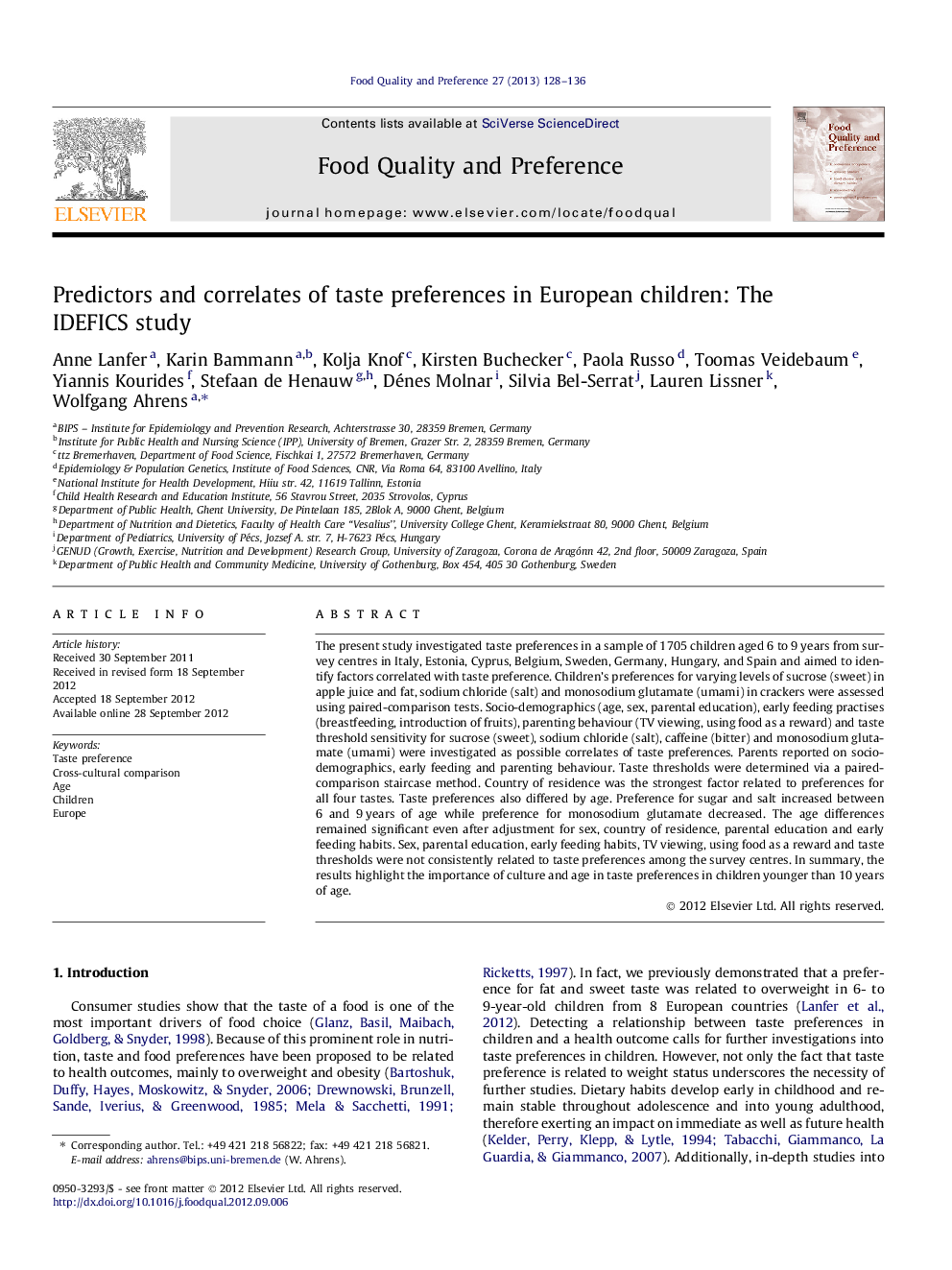| کد مقاله | کد نشریه | سال انتشار | مقاله انگلیسی | نسخه تمام متن |
|---|---|---|---|---|
| 4317416 | 1290593 | 2013 | 9 صفحه PDF | دانلود رایگان |

The present study investigated taste preferences in a sample of 1705 children aged 6 to 9 years from survey centres in Italy, Estonia, Cyprus, Belgium, Sweden, Germany, Hungary, and Spain and aimed to identify factors correlated with taste preference. Children’s preferences for varying levels of sucrose (sweet) in apple juice and fat, sodium chloride (salt) and monosodium glutamate (umami) in crackers were assessed using paired-comparison tests. Socio-demographics (age, sex, parental education), early feeding practises (breastfeeding, introduction of fruits), parenting behaviour (TV viewing, using food as a reward) and taste threshold sensitivity for sucrose (sweet), sodium chloride (salt), caffeine (bitter) and monosodium glutamate (umami) were investigated as possible correlates of taste preferences. Parents reported on socio-demographics, early feeding and parenting behaviour. Taste thresholds were determined via a paired-comparison staircase method. Country of residence was the strongest factor related to preferences for all four tastes. Taste preferences also differed by age. Preference for sugar and salt increased between 6 and 9 years of age while preference for monosodium glutamate decreased. The age differences remained significant even after adjustment for sex, country of residence, parental education and early feeding habits. Sex, parental education, early feeding habits, TV viewing, using food as a reward and taste thresholds were not consistently related to taste preferences among the survey centres. In summary, the results highlight the importance of culture and age in taste preferences in children younger than 10 years of age.
► We investigated taste preferences and their predictors and correlates in European children aged 6–9 years.
► Profound cross-country differences in taste preferences were found.
► Sweet and salt preference increased with increasing age while umami preference decreased.
Journal: Food Quality and Preference - Volume 27, Issue 2, March 2013, Pages 128–136